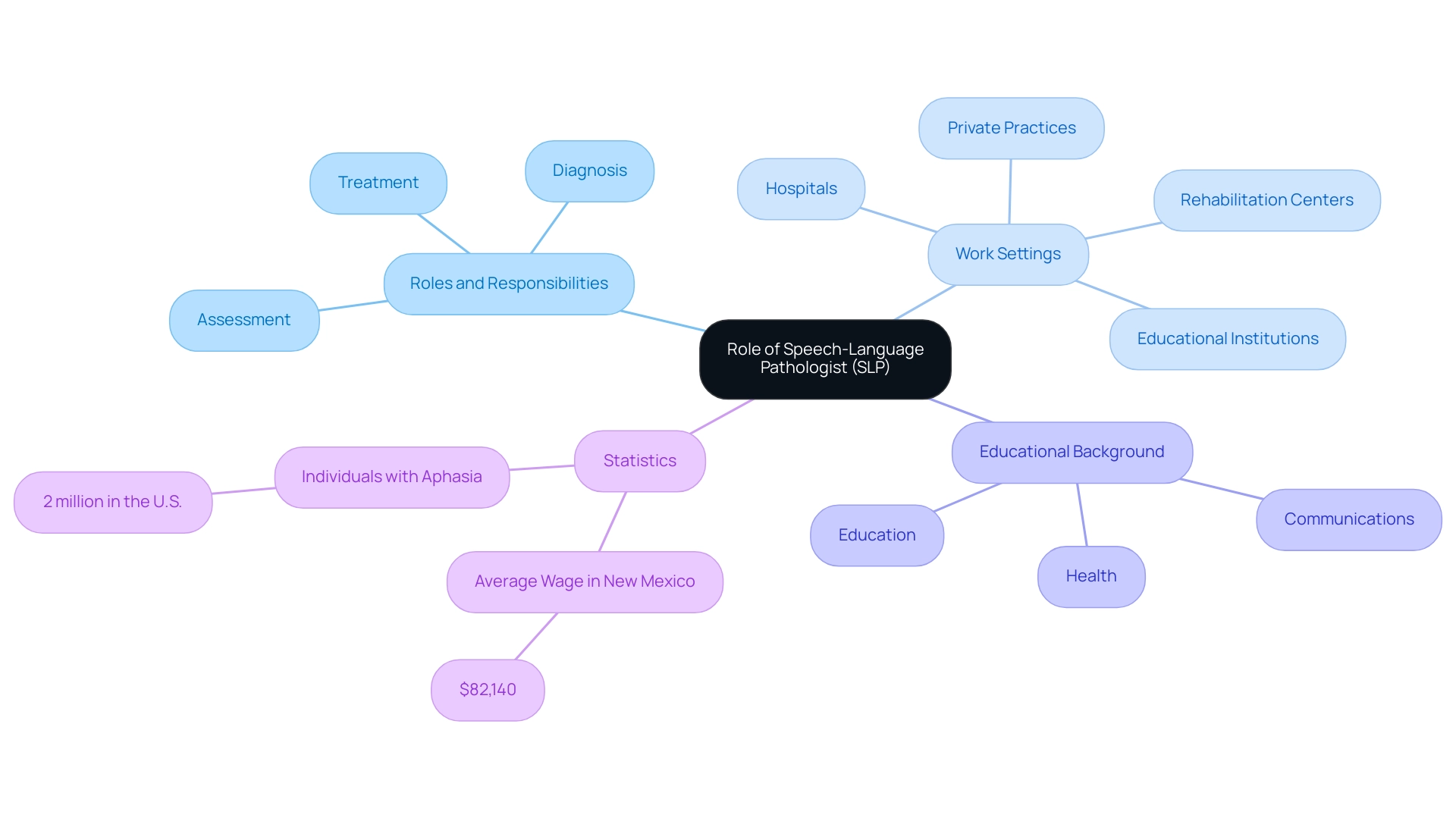A certified healthcare expert known as an SLP speech language pathologist is committed to the assessment, diagnosis, and treatment of speech and swallowing disorders. These SLP speech language pathologists are instrumental in aiding individuals across the lifespan to enhance their speech, language, cognitive-communication, and swallowing capabilities. SLP speech language pathologists function in various settings, such as:
They offer essential assistance for individuals encountering speech impediments, language delays, and other expressive challenges.
Their role is especially important, considering that around
two million individuals in the United States currently live with aphasia, a condition that greatly affects interaction. In New Mexico, the average annual wage for speech-language pathologists is $82,140, reflecting the profession's economic importance. Furthermore, the most common majors among speech-language pathologists include:
This indicates a strong foundation in health sciences.
By tackling these issues, SLP speech language pathologists not only promote effective interaction but also enhance the overall quality of life and personal and professional achievements for their clients.
2. Key Responsibilities and Functions of Speech-Language Pathologists
SLP speech language pathologists engage in a diverse range of duties that are essential for the recovery of individuals with speech disorders. Their primary duties include:
- Conducting comprehensive evaluations to identify specific interaction challenges.
- Developing tailored treatment plans.
- Implementing targeted therapeutic interventions.
Through these processes, an SLP speech language pathologist works diligently with clients to improve speech clarity, enhance language comprehension, and foster social communication skills.
Importantly, they also provide valuable education and support to families and caregivers, equipping them with knowledge about the disorders and effective strategies to assist their loved ones. In educational environments, an SLP speech language pathologist plays a vital role by collaborating with teachers to support students with language impairments, ensuring that these individuals are able to engage fully in academic activities. This collaborative effort is especially important as school enrollment keeps growing, leading to a heightened demand for SLP speech language pathologists to address diverse student needs.
In fact, the overall job ranking score for SLP speech language pathologists stands at 7.2, reflecting the profession's favorable standing and the critical nature of their work in both therapy and education. Moreover, SLP speech language pathologists contribute to the field through research and advocacy efforts, enhancing awareness about communication disorders and advancing optimal practices.
Karr, a seasoned SLP speech language pathologist, emphasizes this variety in work environments:
Our specialists truly have a selection of places where they can work.
This flexibility not only enriches their professional experience but also enhances their ability to impact different populations effectively. On average, SLP speech language pathologists serve a substantial number of clients annually, reflecting the critical nature of their work.
Furthermore, with approximately 200,000 servicemembers departing the military annually and considering career opportunities, speech-language pathologists offer a promising route for individuals moving to civilian life. As they keep adjusting to the changing environment of speech-language therapy interventions, SLP speech language pathologists remain essential for promoting interaction and learning.
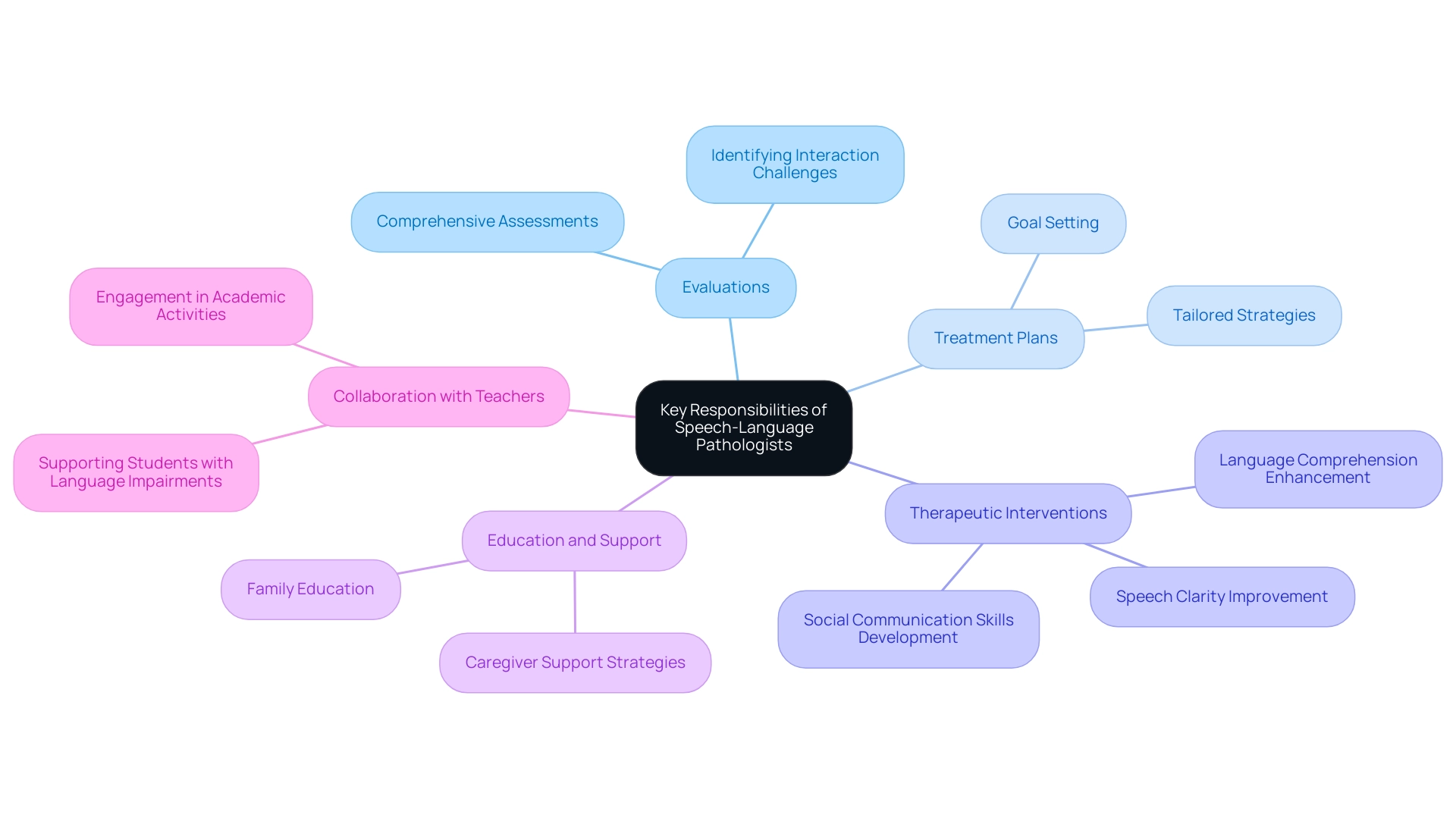
3. Educational Requirements and Certification for SLPs
To pursue a career as an SLP speech language pathologist, individuals are required to obtain a master's degree in speech-language pathology from an accredited institution. This advanced education typically encompasses comprehensive coursework in communication sciences, anatomy, and various therapeutic techniques essential for effective practice.
For those looking to meet the
admission requirements for the M.S. in Communication Science and Disorders, Elmhurst University offers a graduate preparation program designed to facilitate this process. After obtaining their degree, aspiring SLP speech language pathologists must participate in a supervised clinical fellowship, gaining practical experience under the mentorship of experienced individuals. Following this, candidates are required to pass the national examination in speech-language pathology, a critical step towards certification.
Certification from the American Speech-Language-Hearing Association (ASHA) is often mandated for SLP speech language pathologist practitioners, ensuring they adhere to professional standards vital for effective service delivery. Additionally, speech-language pathologists may encounter various conditions, such as spasmodic dysphonia, a voice disorder caused by involuntary movements of the larynx, which can significantly impact communication.
Continuous education is crucial for SLP speech language pathologists to maintain their certification and keep abreast of the latest advancements and best practices within the field.
According to the Bureau of Labor Statistics, jobs in speech-language pathology are projected to grow by 18 percent from 2016 to 2026, underlining the increasing demand for qualified professionals in this area.
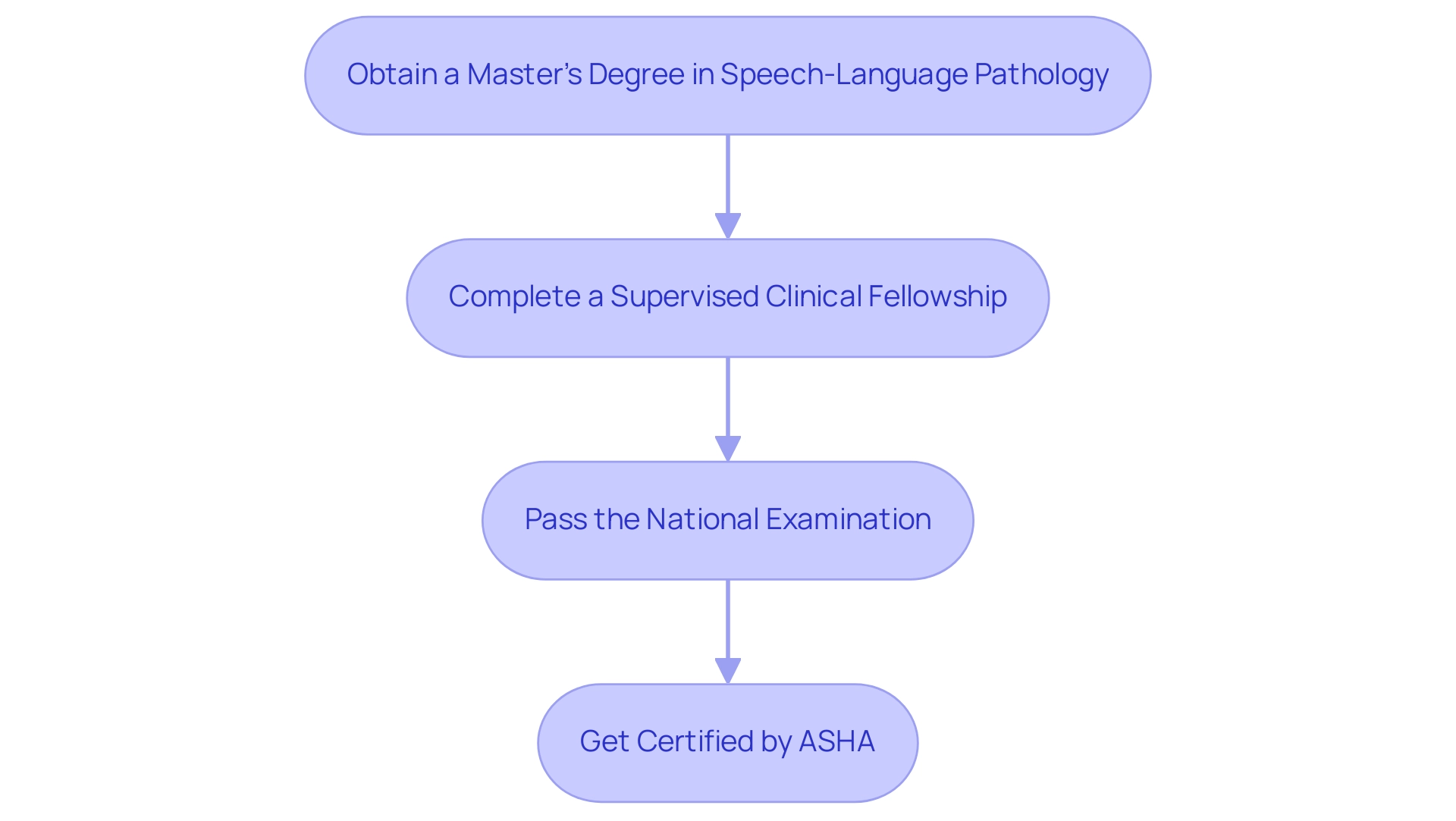
4. Common Disorders Treated by Speech-Language Pathologists
Speech and language therapists play an essential role in the recovery of individuals encountering a wide range of communication and swallowing challenges. They address conditions such as:
- Articulation issues
- Language delays
- Stuttering
- Voice problems
- Swallowing difficulties
For instance, children with speech sound disorders often face challenges in pronouncing specific sounds accurately, while adults may suffer from aphasia following a stroke, which significantly impairs their ability to convey information. SLP speech language pathologists utilize a variety of therapeutic techniques tailored to meet the unique needs of each individual, such as:
- Articulation therapy
- Fluency shaping
- Voice therapy
Utilizing evidence-based practices, they facilitate enhancements in both interaction and swallowing functions.
This vital work not only aids clients in recovering their communicative abilities but also helps restore their confidence and functionality in everyday interactions. As noted by US News and World Report, 'Speech-Language Pathologist was ranked #10 on 100 Best Jobs!' in 2024, reflecting the growing demand and positive job outlook within this field.
Furthermore, the case study titled 'Job Outlook for Speech-Language Pathologists' emphasizes the favorable prospects for speech-language pathologists in the workforce, reinforcing the significance of their contributions.
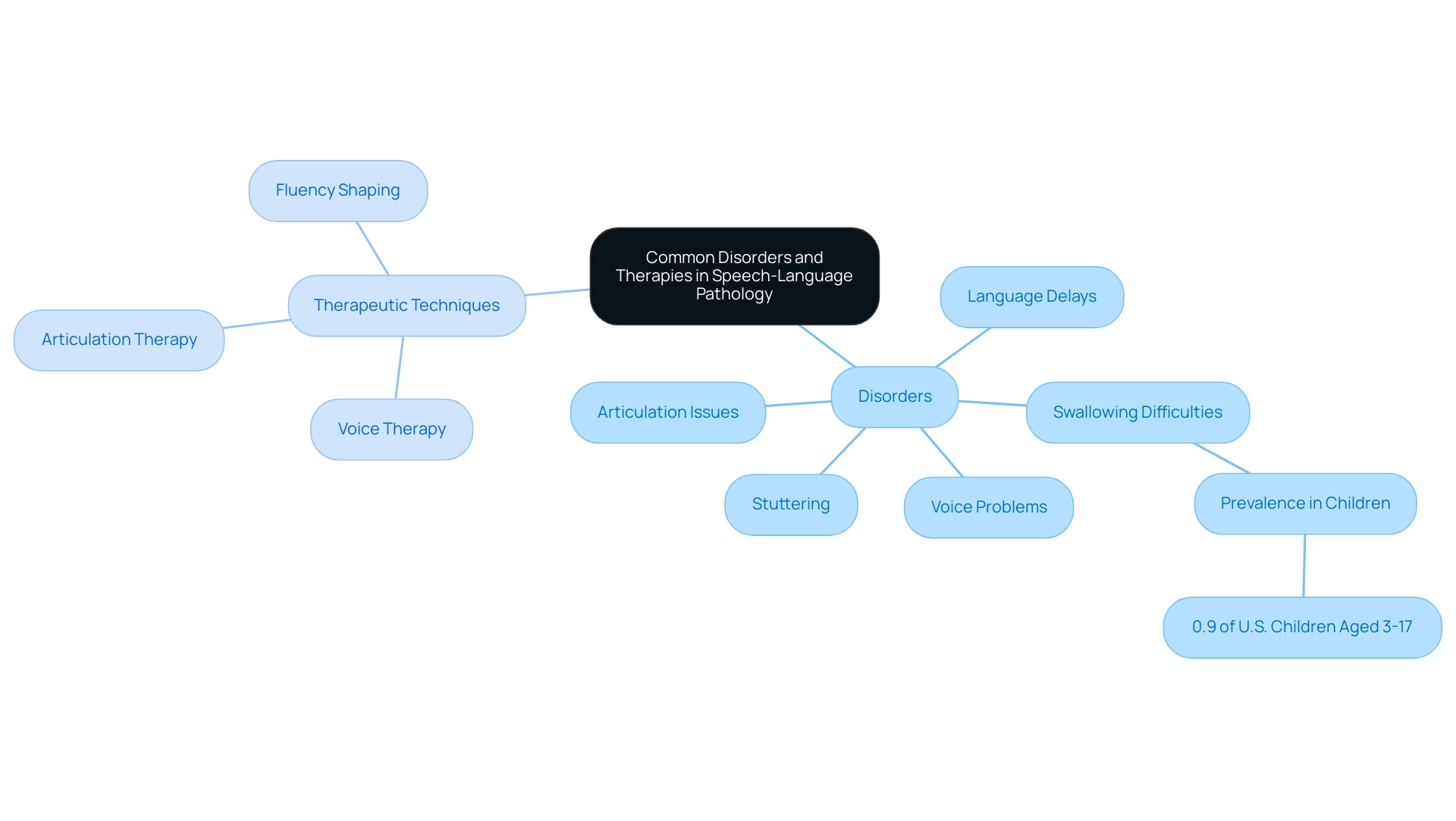
5. The Impact of SLPs on Quality of Life
The role of an SLP speech language pathologist is pivotal in significantly enhancing the quality of life for their clients through targeted interventions that improve expressive skills. This improvement facilitates deeper engagement in social interactions, better access to educational opportunities, and the achievement of professional goals. Evidence suggests that children who receive early intervention for speech and language delays demonstrate higher academic and social success rates.
Furthermore, adults recovering from strokes or neurological conditions often regain vital interaction skills, which are essential for maintaining personal relationships and fostering independence. The implications of timely speech therapy interventions are particularly critical; for instance, delays in early swallow screening can increase pneumonia risk and adversely impact hospitalization outcomes for stroke patients. Notably, statistics indicate that:
- 10 participants (14.70%) succumbed during recovery, highlighting the potential severity of untreated conditions.
While 94.11% of participants maintained adequate oral hygiene, all five individuals who developed aspiration pneumonia were reliant on others for oral intake, underscoring the complex interplay between speech therapy and overall health outcomes. This aligns with findings from the case study titled '
Effectiveness of Different Therapy Approaches,' which emphasizes the importance of tailored strategies in therapy to enhance treatment effectiveness. Ultimately, SLP speech language pathologists enable individuals to overcome interaction obstacles, fostering a sense of belonging and improving overall well-being.
As S.A.S., the supervisor who reviewed and co-authored this article, states, 'The transformative impact of the SLP speech language pathologist in clients’ lives is a testament to the power of effective communication and rehabilitation.
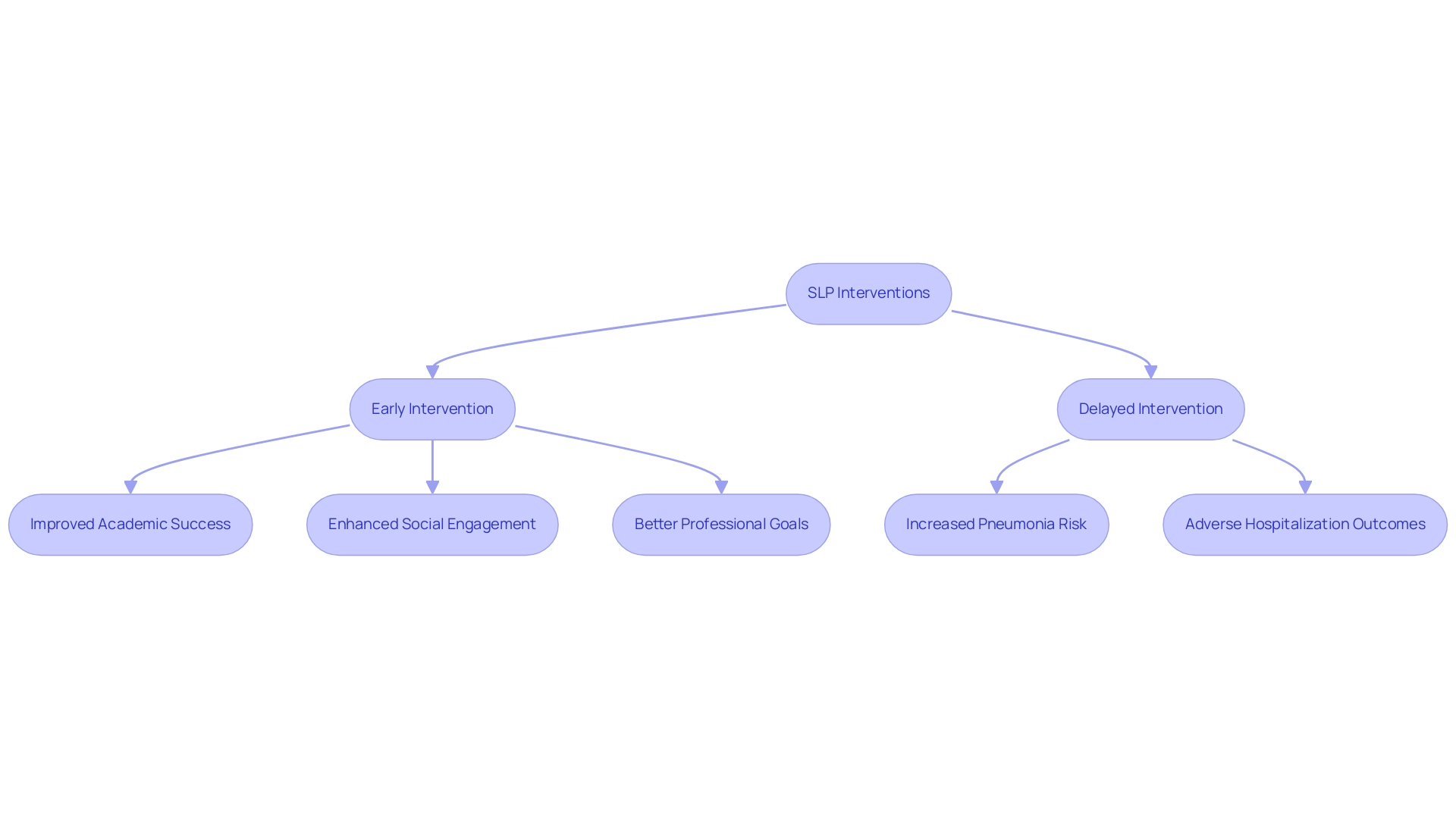
Conclusion
The contributions of Speech-Language Pathologists (SLPs) are indispensable in addressing communication and swallowing disorders. These professionals are equipped with the expertise to assess, diagnose, and treat a diverse range of conditions, significantly enhancing the quality of life for individuals across all age groups. Their roles extend beyond therapy; SLPs collaborate with families, educators, and healthcare providers, ensuring a comprehensive approach to treatment that fosters effective communication and social engagement.
The educational journey to becoming an SLP is rigorous, involving advanced degrees and clinical experience, underscoring the value placed on professional standards in this field. As the demand for these specialists continues to grow, driven by increasing recognition of communication disorders, SLPs are well-positioned to make a profound impact in various settings, from schools to rehabilitation centers.
In conclusion, the work of SLPs is not just about improving speech and language; it is about transforming lives. By facilitating communication and swallowing abilities, they empower individuals to participate fully in their personal and professional lives, ultimately contributing to their overall well-being. As the profession evolves and adapts to new challenges, the vital role of SLPs in promoting effective communication remains clear, highlighting the necessity of their expertise in our society.
